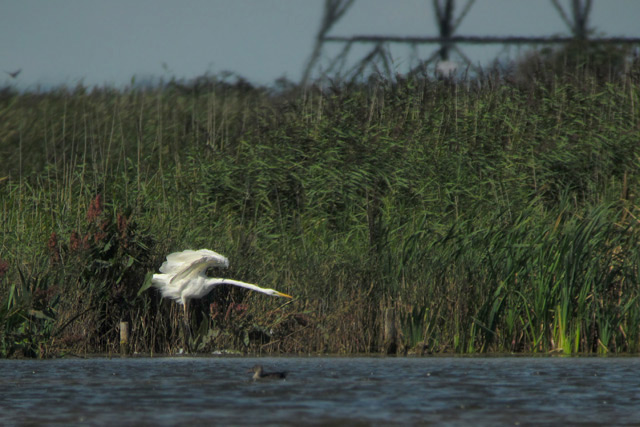One of the great things about evening news shifts is that I have hours of daylight to play with in the mornings. Although it doesn't matter so much in the summer months, it is pretty crucial to me getting out birding during the winter. Anyway, I decided to spend the morning at Rainham Tip, a site I visited properly
for the first time last month (after dipping the Slaty-backed Gull early in 2011). It turned out to be a productive visit, with three
Caspian Gulls, 50+
Yellow-legged Gulls and a couple of medium-dark-mantled gulls, one of which very similar to these purported '
atlantis-types' that have turned up in the Midlands. I'll do a blog post on the latter, later.
I'll start with the
cachinnans, of which all three were seen on the tip itself. First up was a green-ringed bird that had dropped its longest primaries, making it seem slightly more dumpy than it really was. I must admit that I can get a little perplexed when trying to age 'older' Caspian Gulls at this time of year when views aren't great, and this latest individual also confused me - particularly as it was never seen in flight. I guess this bird is a 4cy bird (going in to fourth-winter), with the greenish wash to the bill and black subterminal markings rather extensive. Sadly, it never came close enough to read the ring.
The second bird, a first-summer, appeared for all of a few seconds. I managed a record shot of it facing away, but it soon dropped out of view never to be seen again. Not the prettiest bird, it had dropped all its primaries but hadn't really moulted any scaps. Robust individual, though.
The third, appearing in time for
Rich B's hour-long visit late morning, really was a fine beast - a great advert for how obvious adult Caspian Gulls can be. It was massive; both long-billed and rangey as it towered over most of the other gulls present. In active primary moult, with p7 regrowing, p8 dropped and p9+10 retained. P10 on the bird's left wing had snapped off. It spent much of its time displaying, throwing its head around and calling with wings held open. Note the yellowish legs.
And then, of course, there was the usual rabble of Yellow-legged Gulls. There are a lot of 1cy birds around at the moment; most are already well underway in their moult to first-winter plumage, although there are still the occasional younger-looking individuals. Also had around ten 2cy birds today - notable in the absence during my July visit. All others were adults/near-adults:





































